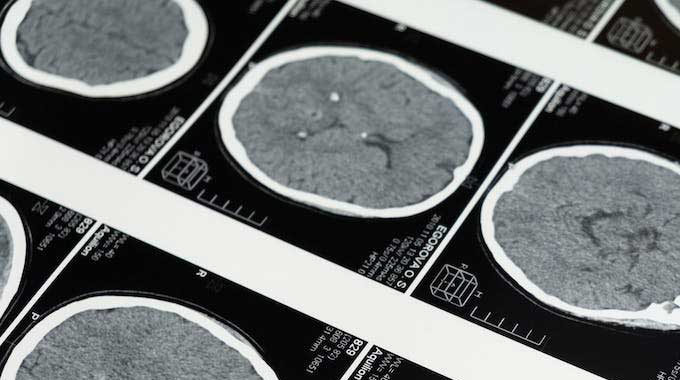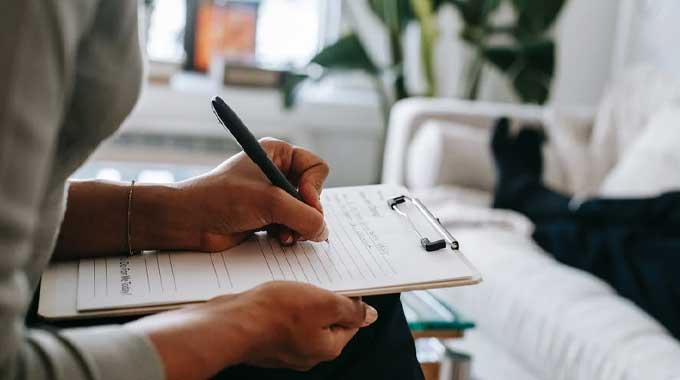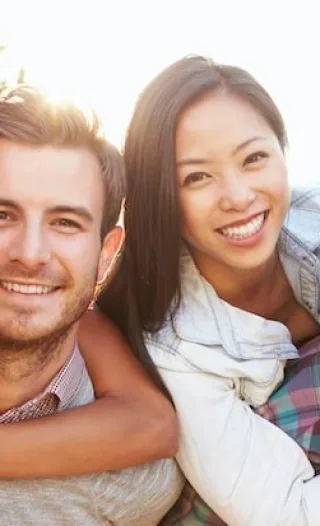What is Transcranial Magnetic Stimulation?
Transcranial magnetic stimulation (TMS) is a noninvasive brain stimulation technique that is used to treat a variety of mental health conditions. TMS utilizes magnetic fields to stimulate nerve cells and change how they function.
- What Is Transcranial Magnetic Stimulation
- How Does Brain Stimulation Work
- Why Is Tms Done
- Does Tms Work
- What Are The Risks And Side Effects Of Tms Therapy
- Who Can Receive Tms Therapy
- Tms Therapy At Home
- Can Tms Therapy Be Done At Home
- How Much Does A Tms Machine Cost
- The Pros And Cons Of At Home Brain Stimulation
- What To Expect From A Tms Session
- How To Prepare For Tms
- During Tms Treatment Sessions
- After Treatment
- Contact Us
How Does Brain Stimulation Work?
As the brain is a complicated organ, the biology behind TMS treatment is not fully understood. However, scientists do know that magnetic energy stimulates nerve cells in the region of the brain involved in mood control. When someone suffers from depression, these areas display decreased activity as nerve cells are not communicating with each other as regularly as in a healthy brain. In turn, this decreases the amount of mood-altering neurotransmitters that are released.
Stimulation delivered from an electromagnetic coil is thought to activate these regions and higher the levels of communication between the nerve cells and other areas of the brain. This results in changes to the mood and behavior of the individual that has undergone TMS to reduce symptoms of depression.
Why is TMS Done?
TMS is most commonly used to treat major depressive disorder typically when other treatments haven’t been effective. Major depression is a treatable condition, however for some people talk therapy (psychotherapy) and medication do not ease symptoms. In these cases, the mental illness is known as treatment-resistant depression. TMS therapy has been successful against treatment-resistant depression by providing symptom relief and improving overall mood.
Anxiety disorder, bipolar disorder, and obsessive-compulsive disorder (OCD) are other mental health conditions that TMS is being used to treat. However, further research still needs to be conducted on how successful these methods really are.
Does TMS Work?
Although the TMS is not successful in treating every person’s depression, for many it completely changes their life. It can take a few weeks after TMS therapy to notice a difference, with some reporting symptom improvements or going away altogether.
As the intricate workings of the technique are largely unknown, its success and methodology are slowly improving over time. Researchers are constantly learning more about the best sites on the brain to stimulate and the number of stimulations required.
It is still unknown if top-up sessions are required to maintain mental health long-term. However, medication and psychotherapy are recommended as ongoing treatment during and after the cycle of TMS therapy has been completed. If symptoms are relieved due to the treatment and then return, the person can undergo further rounds of TMS, this is called re-induction.

What Are the Risks and Side Effects of TMS Therapy?
A huge bonus of TMS therapy is that there is minimal risk and side effects involved. Treating depression with medication comes with a number of challenges. For some antidepressant medications, the response curve for positive results is slow, plus there are a number of adverse side effects from prolonged use. These can include dry mouth, sexual dysfunction, weight gain, gastrointestinal upset, and sedation.
Other brain stimulation techniques used to tackle depression – such as vagus nerve stimulation or deep brain stimulation – are extremely invasive, requiring surgery or electrode implantation. Also, unlike electroconvulsive therapy (ECT), TMS is anesthesia free and does not cause seizures.
The practice overall is safe, though there are a few mild to moderate side effects. These usually ease shortly after an individual session and decrease in intensity with additional sessions. Some symptoms include:
- Lightheadedness
- Headache
- Scalp discomfort at the site of stimulation
- Tingling, spasms, or twitching of facial muscles
If these side effects are unmanageable, the medical professional responsible for the procedure may adjust the intensity of the magnetic energy coming from the electromagnetic coil or suggest taking over-the-counter pain medication before future sessions.
In rare cases, more serious side effects can take shape. These can include:
- Seizures
- Hearing loss if there is inadequate ear protection during treatment
- Mania, particularly in people with bipolar disorder
Who Can Receive TMS Therapy?
TMS therapy is most effective in people who experience treatment-resistant depression and some other mental illnesses. However, there are a few circumstances where it is not recommended. Health professionals need to be as careful as possible when allowing people to undergo TMS otherwise treatment could result in severe injury or death.
Therefore, people with the following may not be able to receive treatment:
- If you have any non-removable metal implants or devices due to the strong magnetic field that is produced during therapy. TMS is not recommended to anyone with:
- Any magnetic implants
- Implanted electrical devices, such as pacemakers or medication pumps
- Aneurysm clips or coils
- Stents
- Cochlear implants for hearing
- Implanted stimulators
- Implanted vagus nerve or deep brain stimulators
- Electrodes for monitoring brain activity
- Bullet fragments
- Any other metal device or object implanted in your body

TMS Therapy at Home
Can TMS Therapy Be Done at Home?
TMS is typically carried out in a clinical setting, however, it is possible to undergo treatment at home. Over the past seven years, companies in the USA have sold at-home brain stimulation devices. These devices generate smaller and safer currents to increase the production of serotonin in the brain.
The Fisher-Wallace Stimulator uses transcranial direct current stimulation (tDCS) as a way to stimulate electrical activity in the brain. It is placed on the head with an elastic band where it holds electrodes against each temple. It is advised the device is used for a month before assessing how effective the treatment turned out.
A smaller, more accessible device created by NPX is also available for at-home brain stimulation which has won awards. This uses repetitive transcranial magnetic stimulation (rTMS), which sends repeating pulses to the brain. To make treatment more comfortable and safe, the repetitive transcranial magnetic stimulation device uses surface pain reduction technology and directs energy toward appropriate regions in the brain. However, this is yet to be FDA-approved and further artificial intelligence advancements are being added to the technology.
How Much Does a TMS Machine Cost?
At-home devices usually cost between $100-200, making TMS treatment a lot more affordable than clinical therapy which can cost around $10,000.
The Pros and Cons of At Home Brain Stimulation
Depression can be all-consuming, with years of standard treatment resulting in no give to their condition. The biggest pro to this device is that many people have reported relief from their depression symptoms after undergoing at-home brain stimulation, allowing them to move past the hold their mental health condition had over their lives.
Despite millions of people dealing with major depressive disorder in the US, many do not have access to TMS therapy as they live in areas where it is not available. At-home brain stimulation devices offer the wider population a more accessible and cost-effective way to treat depression by removing barriers to treatment entry requirements.
At-home TMS sessions also mean no travel is needed to receive treatment, leaving a person’s day uninterrupted. Plus, the device can be used wherever and whenever relief is needed!
The downside to carrying out TMS therapy at home is the lack of long-term clinical trials and studies into its effectiveness. Clinical TMS treatment for therapy-resistant depression underwent twenty years of clinical trials before gaining respect from the medical community and FDA clearance.
The lack of individualism is another issue, with a one-size fits all treatment approach not accounting for the differences between each person’s brain. The low levels of electrical energy in at-home devices are also not as powerful as TMS sessions in a doctor’s office. Therefore, a study labeled these devices as potentially less effective.

What to Expect From a TMS Session
How to Prepare for TMS
Before being able to carry out transcranial magnetic stimulation therapy, a physical and psychiatric evaluation needs to be carried out to ensure the procedure is right for you. Your doctor or mental health provider needs to know if you:
- Are or are thinking of becoming pregnant
- Have any metal implants in your body
- Are taking any medications including; prescriptions, over-the-counter medications, herbal supplements, vitamins, or supplements
- Have frequent or severe headaches
- Have any other medical conditions
- Have any other mental illness, such as substance misuse, bipolar disorder, or psychosis
- Have brain damage from illness or injury, e.g. a brain tumor, stroke, or traumatic brain injury
- Have a history of seizures or a family history of epilepsy
- Have had prior TMS treatment and how successful it was
The only physical preparation needed before the session is to remove any jewelry or piercings from your body.
During TMS Treatment Sessions
In clinical TMS treatments, an expert will first undergo a mapping session with their client. This is to ensure the correct location is pinpointed and the appropriate intensity of stimulation is selected. This first session normally takes around sixty minutes, with the following being around forty minutes.
Clicking sounds, tapping sounds, and slight muscle spasms may occur during the procedure, with some individuals experiencing scalp discomfort.
After Treatment
The scalp discomfort felt in treatment is sometimes experienced after also. However, there should be no serious side effects after the session and daily activities can be continued as normal – including working and driving.
Contact Us
TMS therapy has helped so many people to overcome treatment-resistant mental health disorders and turn a corner towards health. If you are considering clinical TMS therapy or at-home treatment, please do not hesitate to contact GIA Chicago today.
As each individual’s wellness journey is unique, we utilize cutting-edge practices and technology to create a personalized program, specific to your needs and goals. Our expert staff can talk through if TMS may be right for you and shape a treatment plan accordingly.





